Visit: January 25, 2023 at 11:50am; 45℉, cloudy and drizzling
For my phenology project this semester, I am continuing to visit Salmon Hole on the Winooski River. However, I have moved my spot to no longer be on the water’s edge, but higher up on the sandstone lying between the still water and the forested trail. The only reason for this is that there was a lot of ice covering my spot and it would’ve been unsafe to climb down to it.
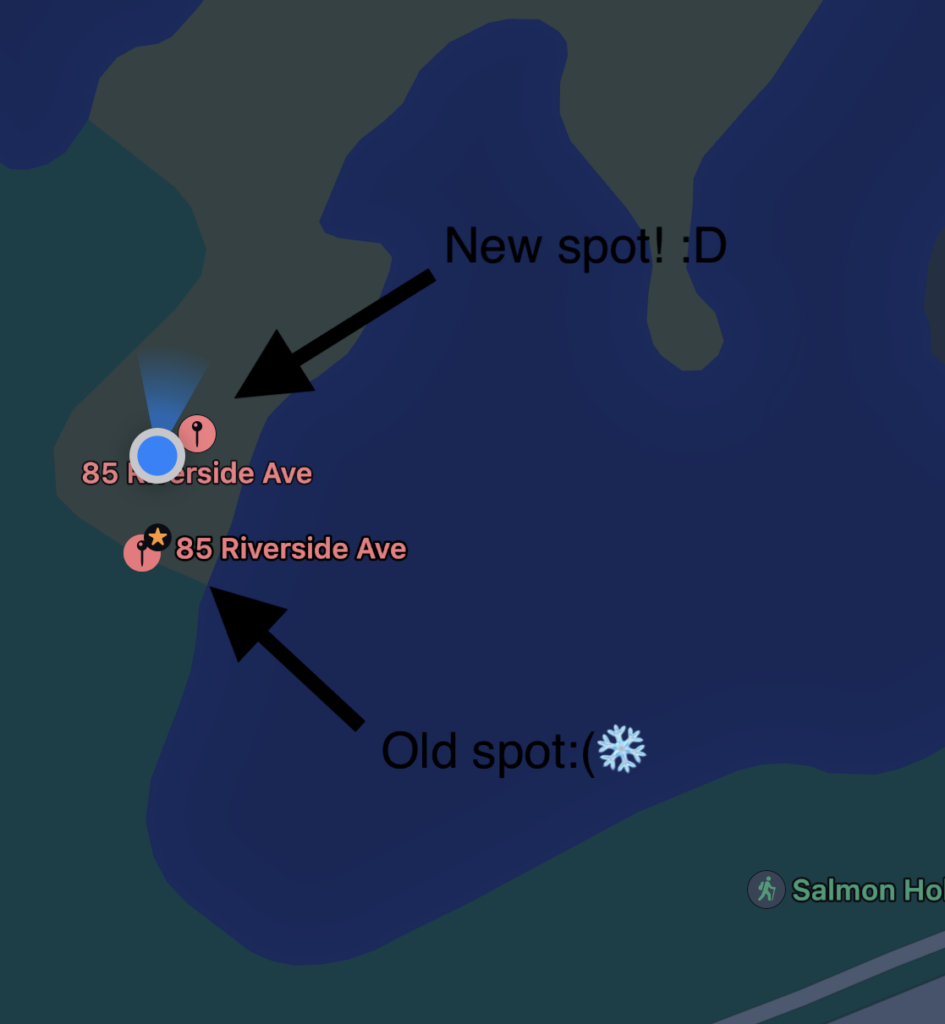
Map of Salmon Hole showing my old spot vs. my new spot
Although I could hear the occasional bird call, I could not observe much wildlife activity. The majority of snow by the water’s edge was untouched, with little sign of animal life approaching the freezing water. However, I was able to spot some tracks. Tracking wildlife at this spot is hard since it is a popular dog walking spot, leading to lots of domesticated paws and not much wildlife.
Animal tracks spotted on the trail leading to my spot. Not sure what they are from but they don’t seem to be from a dog!
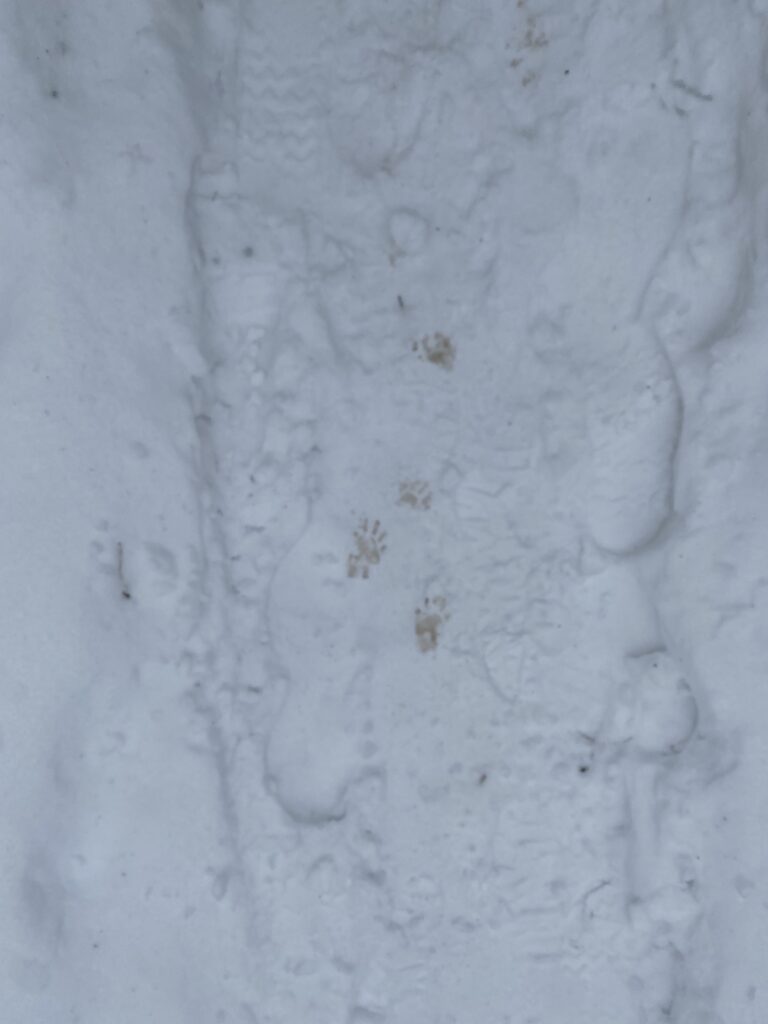
There have been many phenological changes since my last visit to Salmon Hole a month ago. Most notably so, there is quite a bit of snow! The presence of snow at this spot brings up the topic of accessibility, since the uncleared paths and stairs were very icy and dangerous for visitors. Ice began forming on areas of still water at Salmon Hole, indicating the start of winter. Some were still hanging on to the branches of trees at my last visit, but were absent. The previously abundant leaf litter was buried by the snow. There were newly fallen tree branches lying on top of the snow. On the sandstone between the water and woody areas, the only still visible vegetation was a small dogwood tree and a few seedlings. Any other small grasses and shrubs have been covered by snow.

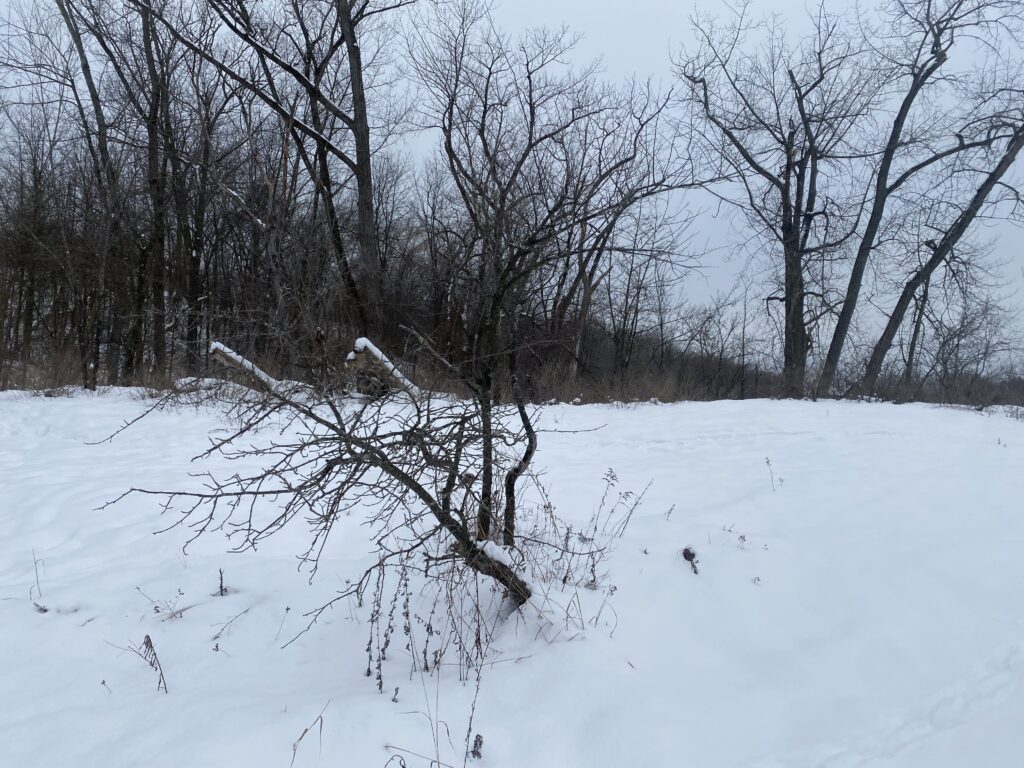
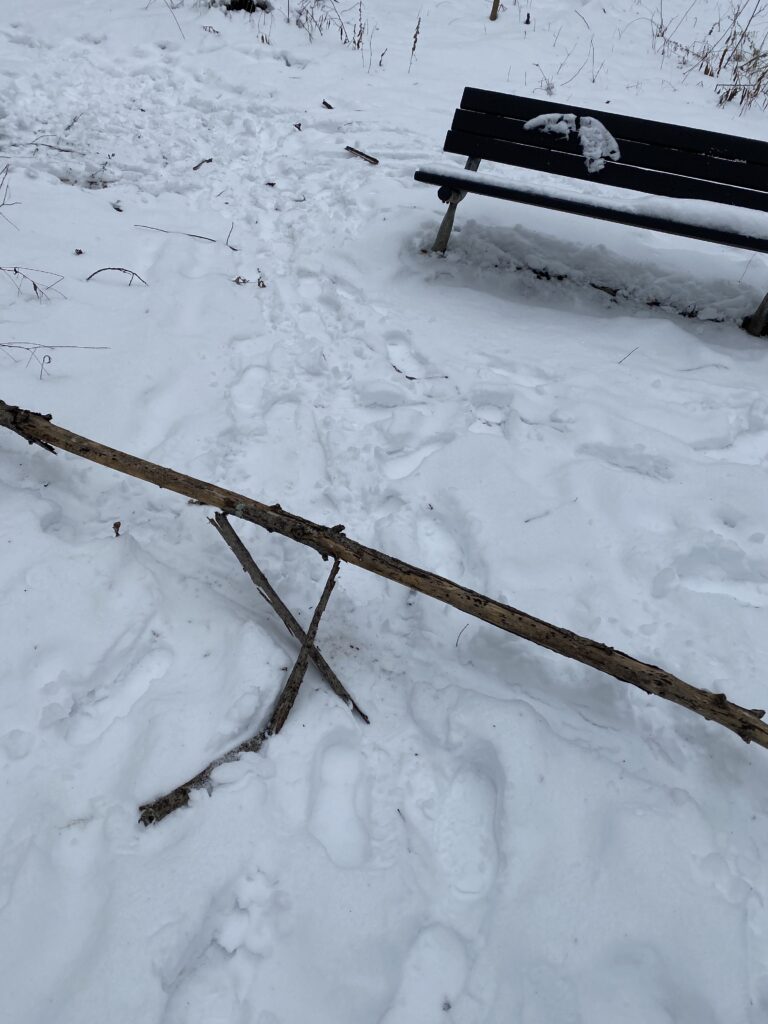
The stream that usually runs from the woody area into the river had no water, just damp leaves and snags. What previously dying grass lied on steep rock was now dead with icicles forming over them.
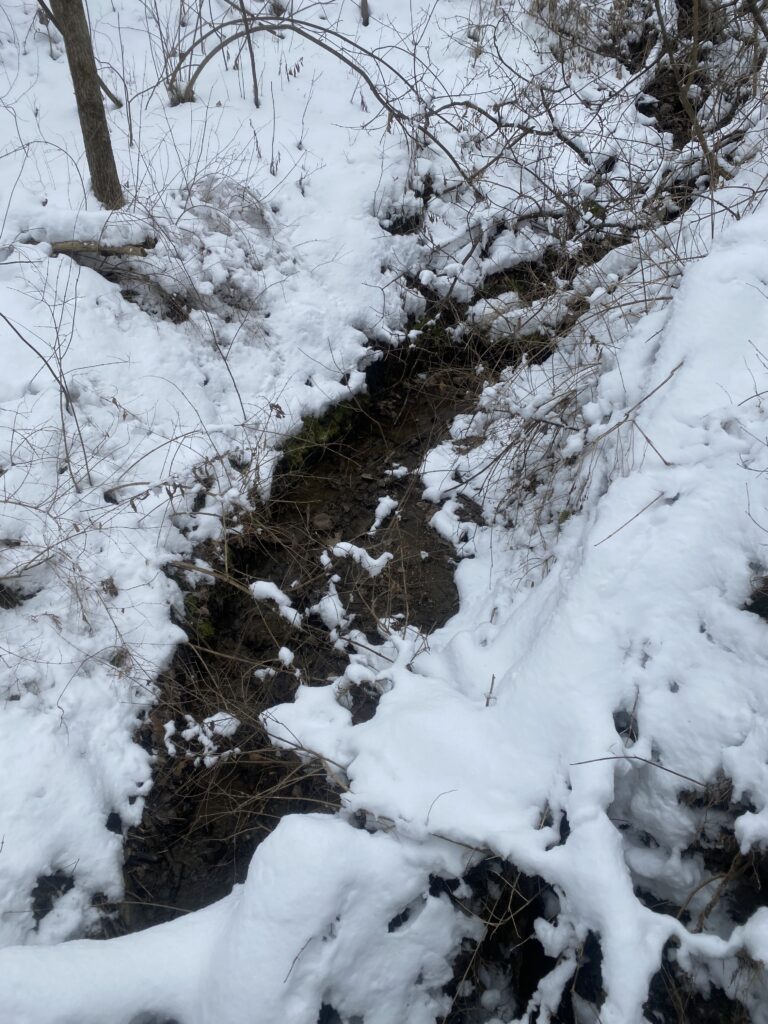
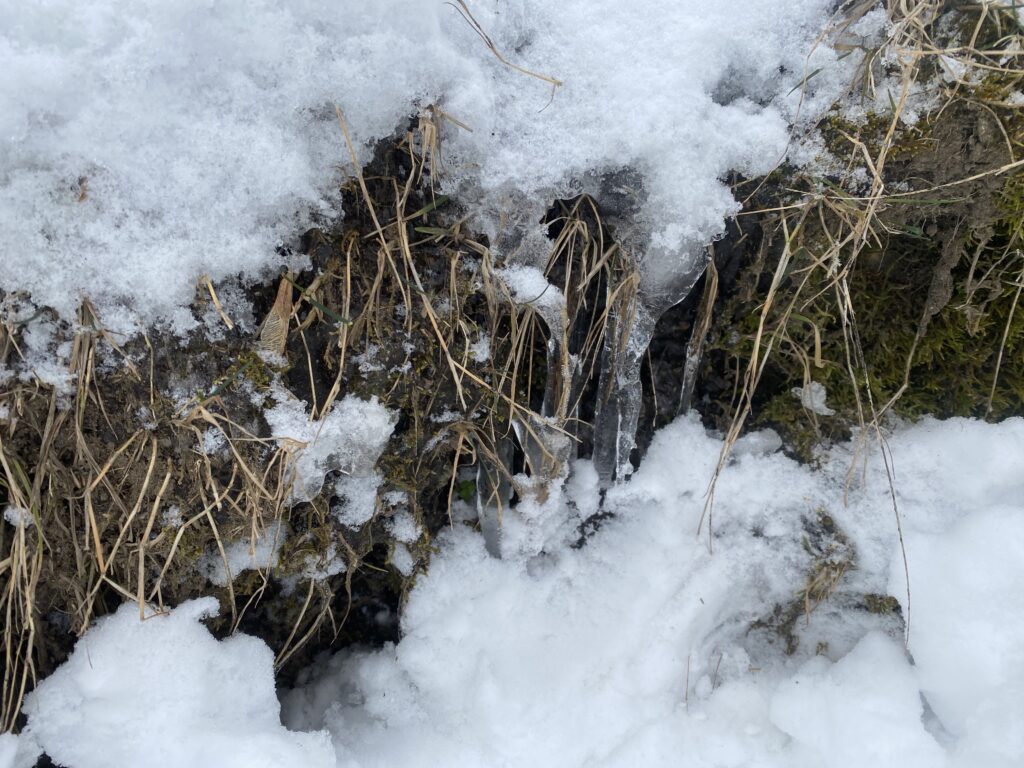
Although I wasn’t able to detect much animals, I hope as my tracking skills improve throughout the semester I’ll be able to better observe my phenology spot for signs of wildlife. I also look forward to seeing what will change at this spot as winter progresses!